Abstract
Respiratory function was studied in five groups of tea workers employed in processing different types of tea. The prevalence of almost all chronic respiratory symptoms was significantly higher in workers processing dog-rose, sage, and gruzyan tea than in control workers. During the Monday workshift there was a significant mean acute decrease in maximum expiratory flow rates at 50% vital capacity (range: 4.1-8.8%) and at 25% VC (range: 7.8-21.8%) except in those exposed to camomile. Acute reductions in forced expiratory volume in one second were considerably smaller and mostly not significant. Mean acute reductions on Wednesday were similar to those on Monday with no significant differences between preshift Monday and Wednesday data. Acute decreases in flow rates at low lung volumes suggest that the bronchoconstrictor effect of the dust acts mostly on smaller airways. Preshift administration of disodium cromoglycate significantly diminished acute reduction in flow rates except in workers processing Indian tea. A comparison of Monday preshift values of ventilatory capacity in tea workers with those in controls indicates that exposure to tea dust may, in some workers, lead to chronic respiratory impairment.
Full text
PDF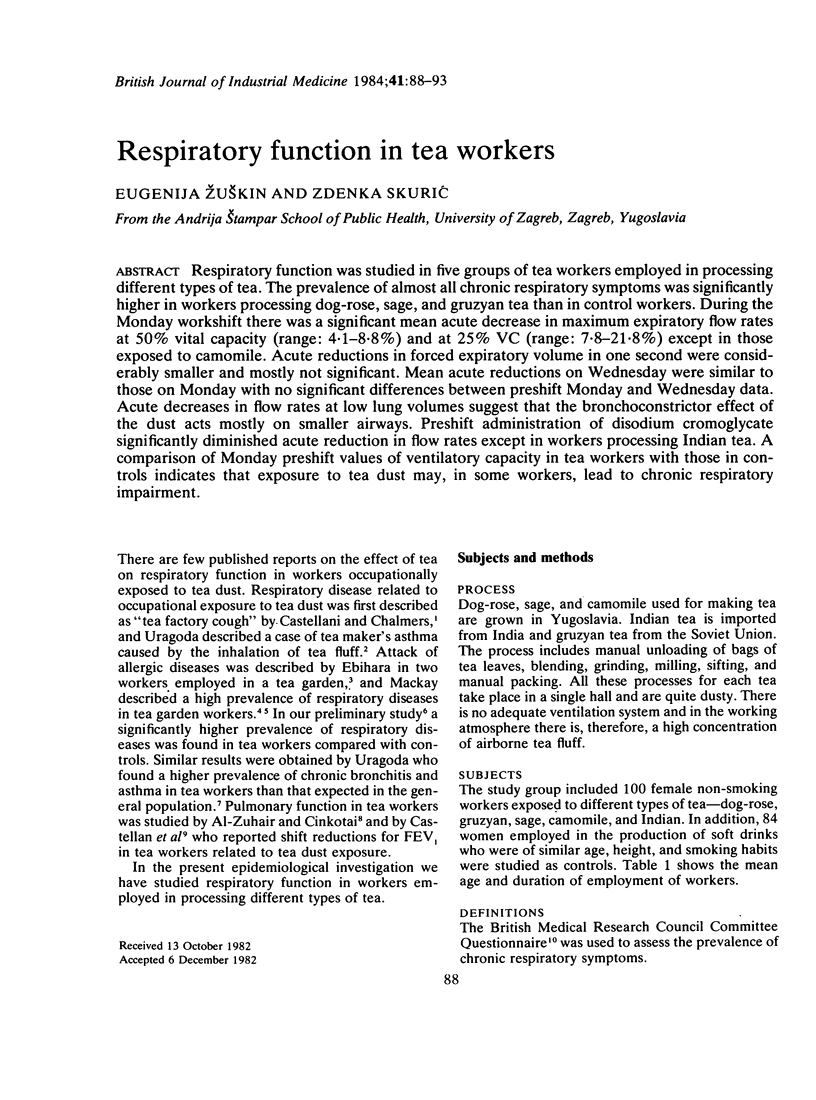
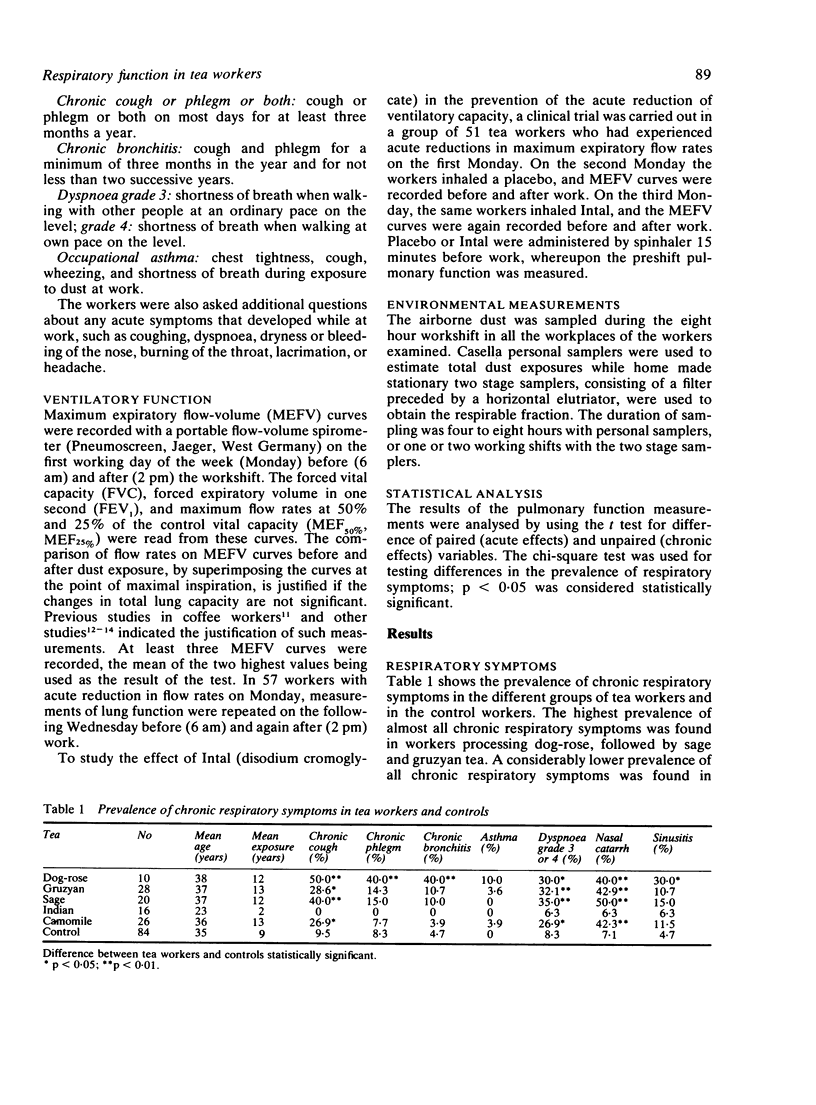
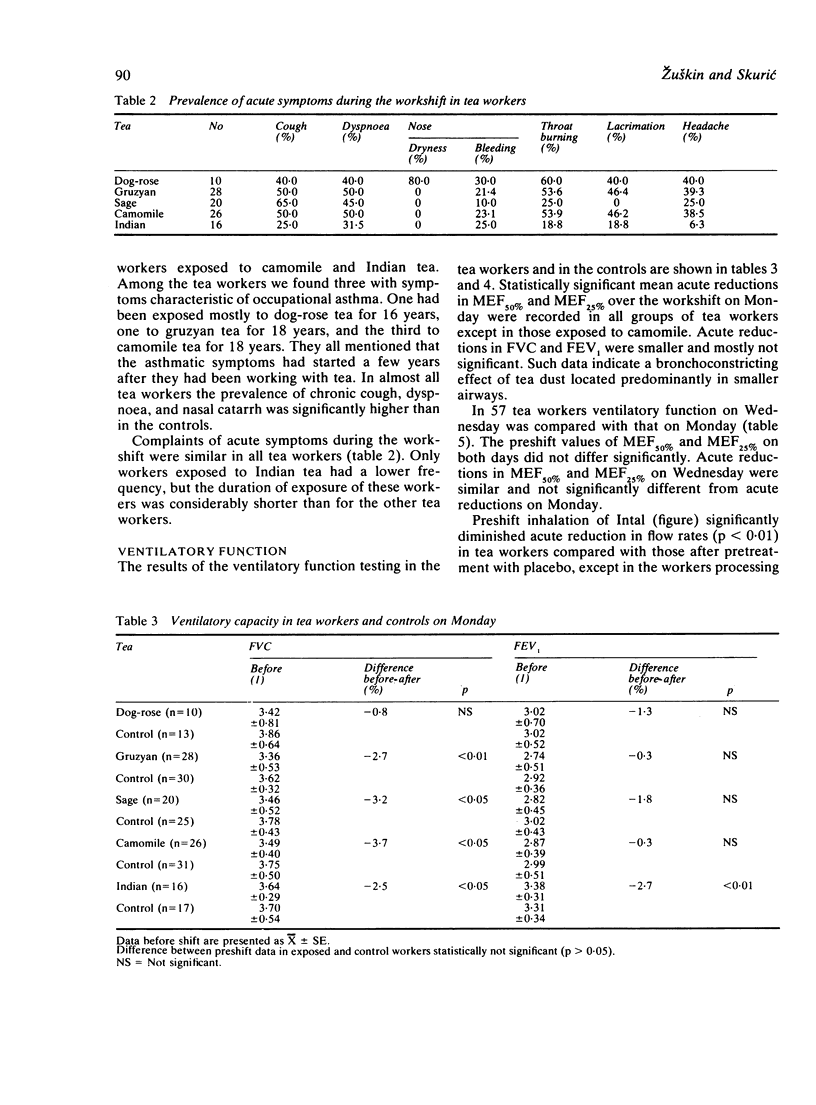
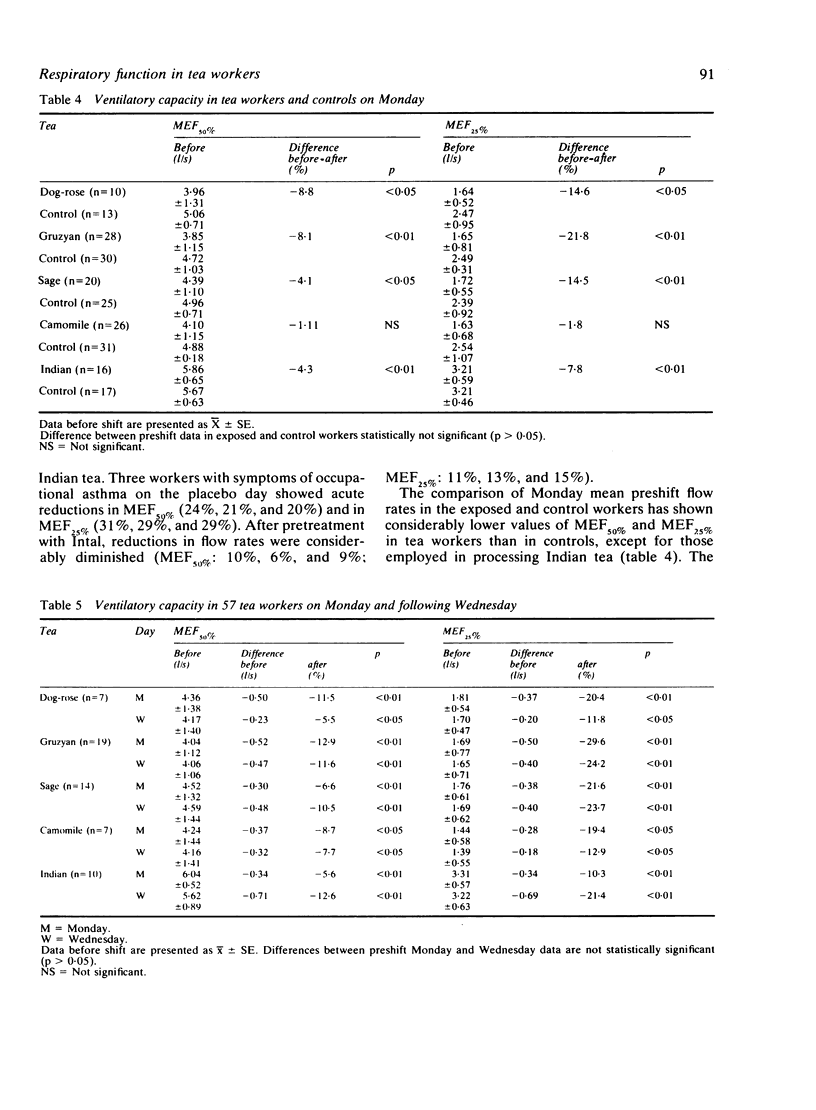

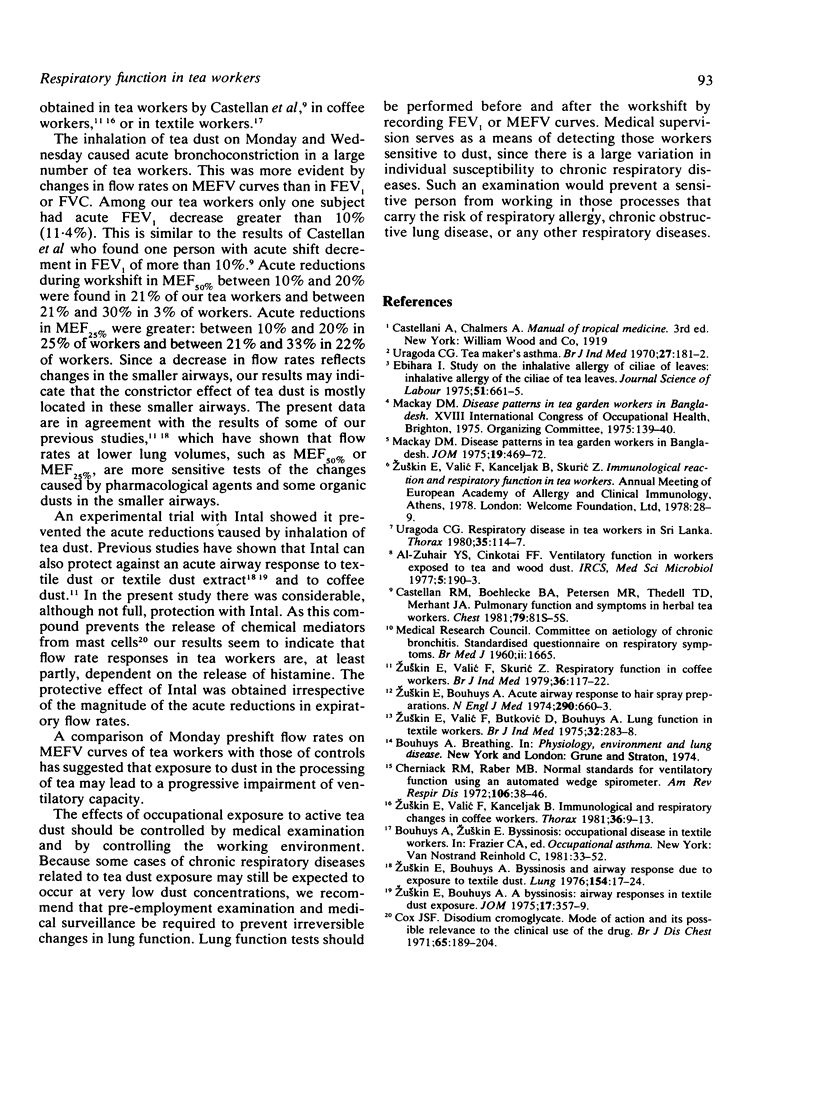
Selected References
These references are in PubMed. This may not be the complete list of references from this article.
- Castellan R. M., Boehlecke B. A., Petersen M. R., Thedell T. D., Merchant J. A. Pulmonary function and symptoms in herbal tea workers. Chest. 1981 Apr;79(4 Suppl):81S–85S. doi: 10.1378/chest.79.4_supplement.81s. [DOI] [PubMed] [Google Scholar]
- Cherniack R. M., Raber M. B. Normal standards for ventilatory function using an automated wedge spirometer. Am Rev Respir Dis. 1972 Jul;106(1):38–46. doi: 10.1164/arrd.1972.106.1.38. [DOI] [PubMed] [Google Scholar]
- Cox J. S. Disodium cromoglycate. Mode of action and its possible relevance to the clinical use of the drug. Br J Dis Chest. 1971 Oct;65(4):189–204. doi: 10.1016/0007-0971(71)90028-3. [DOI] [PubMed] [Google Scholar]
- Uragoda C. G. Respiratory disease in tea workers in Sri Lanka. Thorax. 1980 Feb;35(2):114–117. doi: 10.1136/thx.35.2.114. [DOI] [PMC free article] [PubMed] [Google Scholar]
- Uragoda C. G. Tea maker's asthma. Br J Ind Med. 1970 Apr;27(2):181–182. doi: 10.1136/oem.27.2.181. [DOI] [PMC free article] [PubMed] [Google Scholar]
- Zuskin E., Bouhuys A. Acute airway responses to hair-spray preparations. N Engl J Med. 1974 Mar 21;290(12):660–663. doi: 10.1056/NEJM197403212901205. [DOI] [PubMed] [Google Scholar]
- Zuskin E., Bouhuys A. Byssinosis: airway responses in textile dust exposure. J Occup Med. 1975 Jun;17(6):357–359. doi: 10.1097/00043764-197506000-00005. [DOI] [PubMed] [Google Scholar]
- Zuskin E., Valic F., Bouhuys A. Byssinosis and airway responses due to exposure to textile dust. Lung. 1976 Dec 29;154(1):17–24. doi: 10.1007/BF02713515. [DOI] [PubMed] [Google Scholar]
- Zuskin E., Valić F., Butković D., Bouhuys A. Lung function in textile workers. Br J Ind Med. 1975 Nov;32(4):283–288. doi: 10.1136/oem.32.4.283. [DOI] [PMC free article] [PubMed] [Google Scholar]
- Zuskin E., Valić F., Kanceljak B. Immunological and respiratory changes in coffee workers. Thorax. 1981 Jan;36(1):9–13. doi: 10.1136/thx.36.1.9. [DOI] [PMC free article] [PubMed] [Google Scholar]
- Zuskin E., Valić F., Skurić Z. Respiratory function in coffee workers. Br J Ind Med. 1979 May;36(2):117–122. doi: 10.1136/oem.36.2.117. [DOI] [PMC free article] [PubMed] [Google Scholar]


